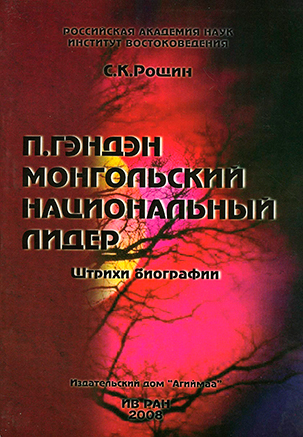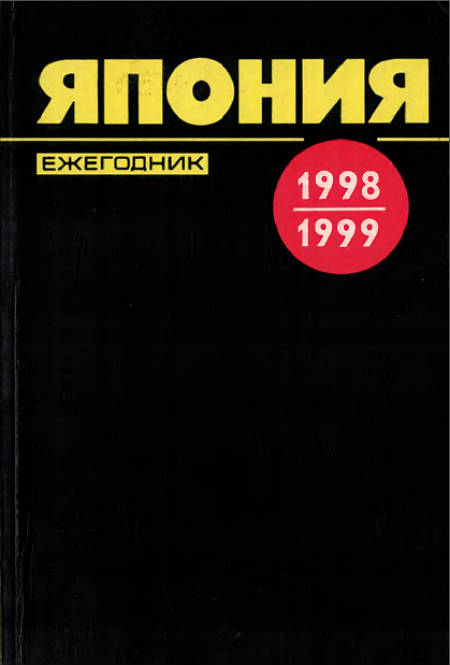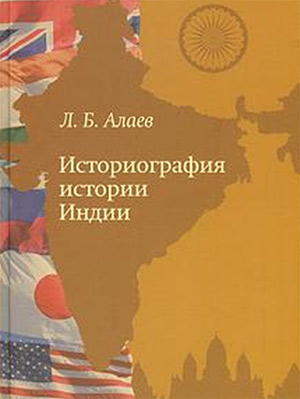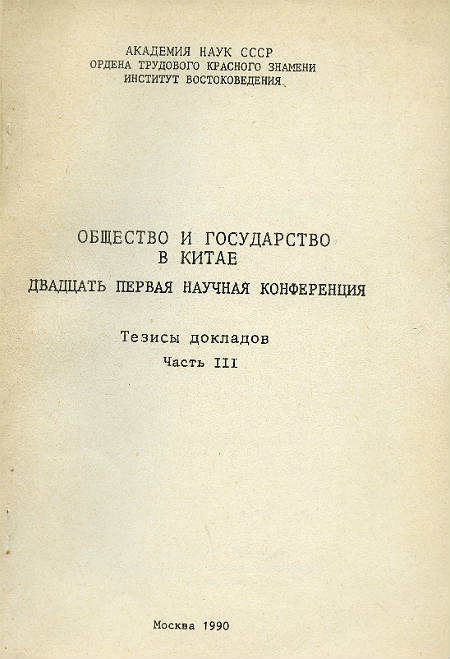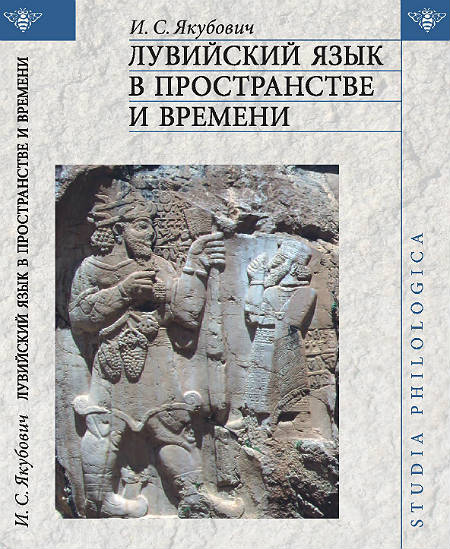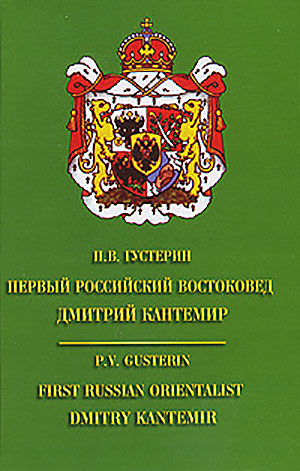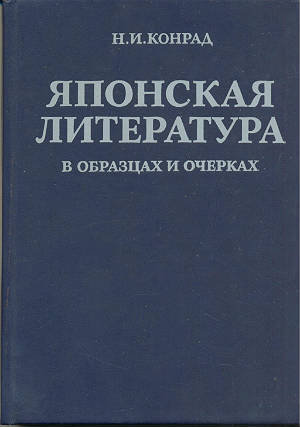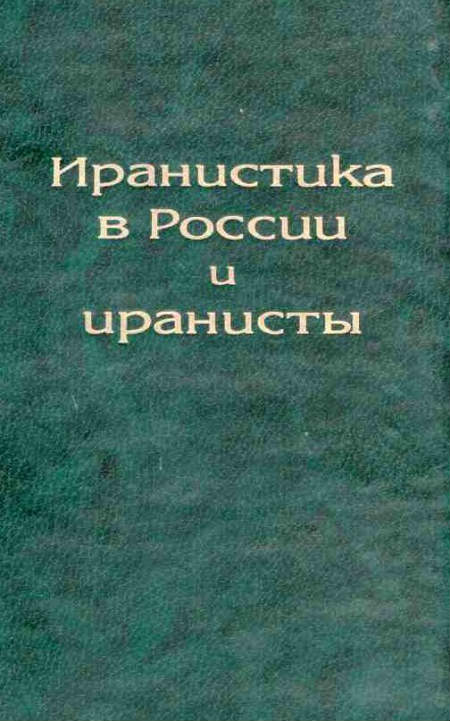Book
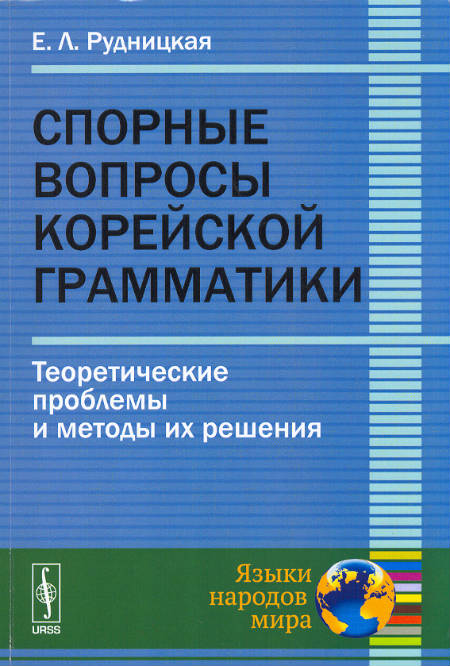 Спорные вопросы корейской грамматики : теоретические проблемы и методы их решения. 2-е изд., испр. и доп.
Спорные вопросы корейской грамматики : теоретические проблемы и методы их решения. 2-е изд., испр. и доп.
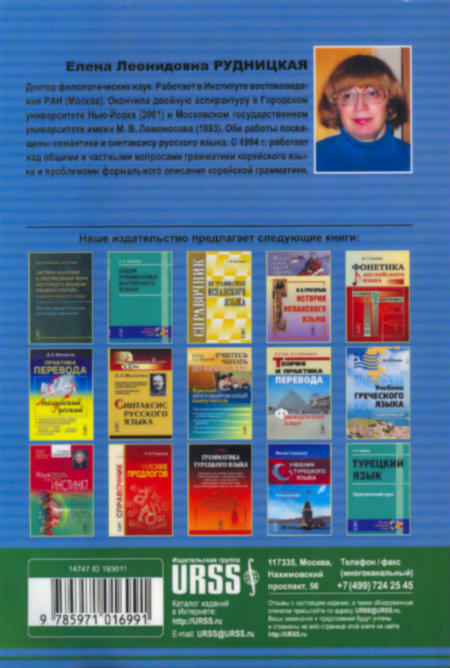 Спорные вопросы корейской грамматики : теоретические проблемы и методы их решения. 2-е изд., испр. и доп.
Спорные вопросы корейской грамматики : теоретические проблемы и методы их решения. 2-е изд., испр. и доп.
Rudnitskaya Elena
Еditor: Alpatov Vladimir
Москва, 2015, 352 p.
The monograph consists of four chapters focused on difficult and arguable issues of Korean grammar. The first major problem concerns word boundaries in an agglutinative language, where inflection markers have some essential properties of clitics. Chapter 1 is mainly devoted to the discussion of cross-linguistic criteria and tests for distinguishing between a bound affix and a particle, and to the application of these tests to nominal and verbal inflection markers in Korean. The second Chapter is concerned with the role of information structure in Korean grammar, and with the interplay of grammatical and information structure factors in explaining certain nominal- and clause-structure features in Korean. Detailed discussion is given to the issue of whether Korean nominative noun phrases can be considered grammatical subjects. Other issues related to syntax and information structure are also analyzed, in particular, those of topic and contrastive topic constructions. All of these constructions are of considerable interest but present difficulties for an analysis in one particular framework; they can be more successfully analyzed if one combines elements of various approaches. In the third Chapter, quantifier and numeral constructions, numeral constructions with classifiers, and approximate numeral constructions are analyzed. In the fourth Chapter, a number of syntactic issues is considered, e.c. the contrastive negation construction, constructions with evidential markers, etc. Specific data relevant to these constructions is examined; existing analyses of the constructions in question are discussed, and new original solutions are proposed. The monograph contains useful and interesting information referring to Korean grammar and to different areas of grammar in general. It is intended for specialists in Korean and Japanese grammar, syntax and typology, as well as for a wide range of readers interested in theoretical linguistics.
Content
Introduction. Clause structure in Korean as an SOV language………………………………………7
Chapter 1. Agglutination and the word boundary; the syntactic status of grammatical particles and of postpositions…………………………………………………………………………27
1.1. The positions of inflexion affixes in the word – are they bound morphemes or Particles………………………………………………………………………………………27
1.1.1. Noun (direct case markers)……………………………………………………………………32
1.1.2. Verb …………………………………………………………………37
1.1.3. A formal description of inflected nouns and verbs in Korean………………………………….61
1.1.4. Conclusion………………………………………………………………………71
1.2. Delimiters and discourse particles…………………………………………………………………..72
1.3. Postpositions……………………………………………………………………………74
1.4. A typological approach to the issue of the “group flexion”…………………………………83
Chapter 2. Information structure and its interaction with Korean grammar……………90
2.1. The issue of subject and topic of a clause…………………………………………………………90
2.1.1. Morphological features and the scope of use of a topic-marked noun compared to a nominative-marked noun………………………………………………………………93
2.1.1.1. Morphological features of the subject…………………………………………93
2.1.1.2. Scopes of use for -i/-ka and -(n)un and information structure load carried by these morphemes………..97
2.1.2. Subjecthood tests (or typology-based criteria of the subject)……..……………..100
2.1.3. Summary and conclusion.…………………………………………………………..116
2.1.4. The issue of a universal definition of a subject………………………………………………120
2.2. Strategies of identifying the subject of a clause in cases of ambiguity…………………………122
2.3. Topic and focus of the clause……………………………………………………………………….127
2.3.1. Contrastive theme/topic and focus in sentences with a fronted
topic (not a subject), and with a Categorical subject topic.………………………….133
2.4. Sentences with a nonstandard information structure…………………………………140
2.4.1. Stative predicates in the ‘TOP-NOM’ construction
in a “multiple nominatives”, or “topic +subject”, sentence……………………………………..142
2.4.1.1. Subject properties of the topic NP and of the nominative NP
In the ‘TOP-NOM’ construction (the construction with a stative
psych verb (53б) and the “topic + subject” construction (52a))………………………143
2.4.1.2. How can we account for the properties of the “topic + subject”
construction illustrated in 2.4.1.1?………………………………………………………………..146
2.4.1.3. The experiencer of the stative psych verb as a bearer
of the prominent discourse role ‘subject of a psychological state’…………………..151
2.4.1.4. Conclusion.…………………………………………………………………………………………158
2.4.1.5. Verbs denoting a state as an anomaly from the point of view of typology.
Binominative construction………………………………………………………………………158
Chapter 3. Korean quantitative constructions………………………………………162
3.0. Quantitative constructions as scalar constructions………………………………………………………………162
3.0.1. Classifier constructions……………………………………………………………………………………164
3.1. Korean classifier constructions…………………………………………………………………………………..167
3.1.1. A formal analysis of the classifier construction: existing approaches……………………167
3.1.2. Denotation of the lexical noun in the classifier construction………………………………173
3.1.3. Doubling of the accusative marker and floating quantifiers: analysis………………………180
3.1.4. The alternative analysis in the Copy theory of movement framework…………………………213
3.1.5 Conclusion………………………………………………………………………………….217
3.2. Comparison of Russian and Korean quantitative constructions…………………………………………………217
3.2.1. Quantitative constructions with quantifiers of small or vague quantity.……………………218
3.2.2. Quantitative constructions with intensifiers such as sliškom ‘too/too much’, polnostju ‘completely’, etc……………………………………………………………………………………….222
3.2.3. “Objective” (simple / enumerative) form of numerals in Koreanand Russian collective nouns……………………………………………………………………………………225
3.2.4. Conclusion.…………………………………………………………………228
3.3. Approximation markers in quantitative classifier constructions………………………………………………….229
3.3.1. The derivation paradigm of a numeral; approximate numerals…………………………………..231
3.3.2. The nominal particle -ccum and postpositions -cengto, namcis meaning approximation / limit…………………….………………………………………………………….238
3.3.3. Conclusion………………………………………………………………………245
Chapter 4. Separate issues of Korean syntax……………………………………………………………246
4.1. The contrastive negation construction in Korean: a syntactic analysis……………………………………246
4.1.1. Overview of the contrastive negation construction…………………………………………………246
4.1.2. The analysis of the parenthetical copula construction ‘A-ka ani-la’ in Korean………….253
4.1.2.1. General properties of the construction…………………………………………………….253
4.1.2.2. Syntactic analysis of the construction……………………………………………………….255
4.1.3. The semantic analysis of the ‘A-ka ani-la’ construction……………………………………………263
4.1.4. The syntactic tree for ‘A-ka ani-la’…………………………………………………………………………..265
4.1.5. Conclusion.……………………………………………………………………..269
4.2. Evidentiality constructions and quotative constructions in Korean and Russian…………………..270
4.2.1. Evidentiality as a grammatical category…………………………………………………….270
4.2.2. The construction with -te- in Korean………………………………………………………..274
4.2.3. The quotative construction in Korean; contracture occurring
in this construction……………………………………………………………………….275
4.2.4. Conclusion…………………………………………………………………………………..289
4.3. The issue of subject raising: syntactic approaches to subject raising…………………………………..289
4.3.1. The empirical evidence for the analysis of subject raising involving movement………………………………………………………………………296
4.3.2. The options of raising analysis emerging after taking the data on numeral and quantitative constructions into account…………………………………………………………306
4.3.3. Conclusion……………………………………………………………………309
Conclusions…….……………………………………………………………………………311
References…………………………………………………………………………………..317
Glosses and abbreviations…………………………………………………………………341
Yale Romanization with corresponding Korean letters……………………………………………344
РУССКАЯ ВЕРСИЯ: Спорные вопросы корейской грамматики : теоретические проблемы и методы их решения. 2-е изд., испр. и доп.


